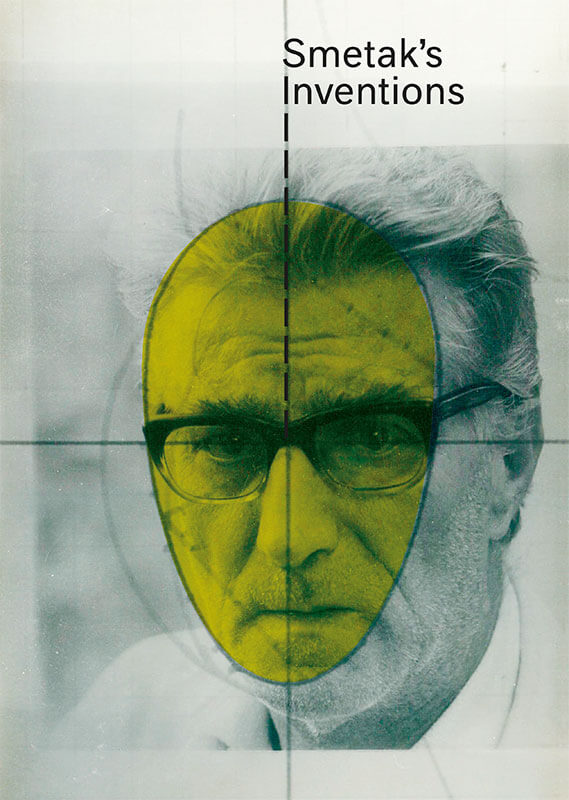
Smetak’s Inventions
Die vermischten Welten des Erfinders, Klangkünstlers und Musikers Walter Smetak (1913-1984)
The Interfused Realms of Inventor, Sound Artist, and Musician Walter Smetak (1913-84)
Der aus der Schweiz 1937 nach Brasilien emigrierte Musiker und Erfinder Walter Smetak ist einer der wichtigsten Protagonisten von Klangkunst und experimenteller Improvisation in der brasilianischen Avantgarde der 1960er-1980er Jahre, dessen Schaffen bis heute fortwirkt. Im Zentrum seines Schaffens stehen über 100 von ihm erfundene und gebaute Instrumente und Klangskulpturen, so genannte »Plásticas Sonoras«. Sein Werk umfasst darüber hinaus zahlreiche Kompositionen, Tonaufnahmen, Bücher, Gedichte, Schriften, Theaterstücke, die Zeugnisse seines integrativen assoziativen Geistes sind. Während Walter Smetak in Europa und Nordamerika nur wenigen bekannt ist und seine Musik und seine Instrumente nur punktuell zu hören waren, gehörte er in Brasilien zu den wichtigen Figuren einer Gegenkultur und einer stark interdisziplinär denkenden und arbeitenden Künstlergemeinschaft in Salvador de Bahia.
Die von Julia Gerlach herausgegebene Publikation Smetak’s Inventions fasst das Recherche- und Ausstellungsmaterial des Projektes Re-inventing Smetak (Projekt von Berliner Künstlerprogramm des DAAD, Ensemble Modern in Kooperation mit dem Goethe-Institut) zusammen und möchte diesen außergewöhnlichen Künstler, sein vernetzendes Denken und seine kreative, an Transformation interessierte Persönlichkeit einer breiteren, deutsch- und englischsprachigen Leserschaft zugänglich machen.
Neben den »Plásticas Sonoras« widmet sich die Publikation drei zentralen Themen in Walter Smetaks Schaffen: erstens der Symbolik dieser Klangskulpturen und Instrumente, die besonders in Smetaks Schrift Simbologia dos Instrumentos und seiner Komposition M 2005 hervortritt, zweitens dem Projeto do Estudio Ovo, einem eiförmiges Ton- und Hörstudio, das viele seiner klanglichen und akustischen Visionen und sein Interesse an Resonanzen, Mikrofonierung, Verstärkung, Mikrotonalität und Raum vereint. Und drittens dem Begriff »Caossonância«, der einen meta-akustischen, kosmischen Zustand beschreibt, der Konsonanz und Chaos übergeordnet ist, in dem sich Licht in Klang verwandelt.
Musician and inventor Walter Smetak, who emigrated to Brazil in 1937, is one of the most important protagonists of sound art and experimental improvisation of the Brazilian avant-garde of the 1960s–80s. His work continues to have an impact today. Forming the core of his creative output are more than 100 instruments and sound sculptures that he invented and built himself, his so-called »Plásticas Sonoras«. His work also includes numerous compositions, sound recordings, books, poetry, writings, and plays that are a testament to his integrative, associative spirit. Although Walter Smetak is not widely known in Europe and North America and his music and instruments were heard only infrequently, he was one of the most important figures in Brazil of a counterculture and a highly active artistic community in Salvador de Bahia with strong interdisciplinary underpinnings.
The publication Smetak’s Inventions, edited by Julia Gerlach, provides an overview of the research and exhibition materials presented in the project Re-inventing Smetak (organized by the DAAD Artists-in-Berlin Program and Ensemble Modern in cooperation with the Goethe-Institut). Its goal is to make this extraordinary artist, his networked thinking, and his creative personality that yearned for transformation accessible to both a broader German- as well as English-speaking readership.
In addition to the »Plásticas Sonoras«, this publication is dedicated to three central themes in Smetak’s oeuvre: first, the symbolism of his sound sculptures and instruments, made evident in particular in his book Simbologia dos Instrumentos and his composition M 2005; secondly, the Projeto do Estudio Ovo, a egg-shaped sound and listening studio uniting many of his sonic and acoustic visions as well as his interests in resonances, miking, amplification, microtonality, and space. And finally, the term »Caossonância«, which describes a cosmic, meta-acoustic state superior to consonance and chaos, in which light is transformed into sound.
Herausgegeben von/Edited by Julia Gerlach, Berliner Künstlerprogramm des DAAD
118 S./pp., Fotos, pb., € 22.–, 978-3-95593-094-3
Customers from North America can

